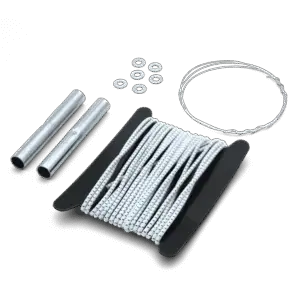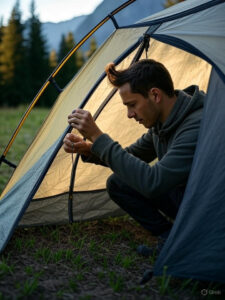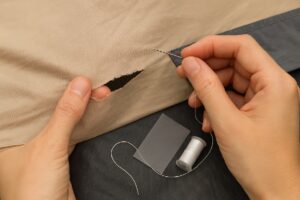Camping is such a fantastic way for me to connect with nature, but it also involves the not-so-glamorous task of setting up and packing down my tent. One often overlooked aspect of camping is how I store and fold my tent. Proper tent storage and folding can significantly impact the lifespan of my tent and make my camping trips more enjoyable. In this guide, I will provide step-by-step instructions on how to store and fold my tent like a pro.
Why Proper Storage and Folding Matters
Before diving into the how-to, let me explain why it’s so important to store and fold a tent correctly:
1. It Prolongs My Tent’s Lifespan
Proper storage and folding can extend the life of my tent, saving me money in the long run.
2. Eases Setup for Future Trips
When I store my tent properly, I’ll find it much easier to set up on my next camping adventure.
3. Prevents Damage and Mold Growth
Incorrect storage can lead to damage, mold growth, and unpleasant surprises on my next trip.
Now, let’s get into the nitty-gritty of storing and folding a tent.
How I Fold My Tent
1. Clear the Tent
Before folding my tent, I remove any stakes, guylines, or accessories from it.
2. Flatten Tent
I lay the tent flat on the ground, ensuring it’s clean and dry.
3. Fold the Tent Body
Most tents fold in a simple manner. Usually in thirds or quarters, depending on the design. When I’m folding my tent, I’m mindful of any door or windows flaps, ensuring they align correctly during the fold.
4. Fold the Rainfly (if applicable)
If my tent has a rainfly then I will fold that separately. Mosty rainflys can be folded into a compact rectangle.
5. Roll It Up
I start rolling the tent tightly from one end to the other, ensuring it’s stays compact and secure as I roll it.
6. Stow the Tent
I place the neatly rolled tent into its storage bag or sack. I label the storage bag with the tent’s name or specifications for easy identification. Then I store my tent in a cool, dry place to prevent exposure to extreme temperatures and moisture.
Common Mistakes I Avoid When Storing My Tent
To ensure my tent stays in top condition, I avoid making these common mistakes:
1. Not Allowing the Tent to Dry
Storing a wet or damp tent can lead to mold and mildew growth. I always make sure that the text is completely dry before storing it. Even if I have to pack a wet tent to travel home – as soon as I arrive home, I will unpack it and dry it thoroughly before repacking and storing it.
2. Folding It Unevenly
Uneven folding can create creases and damage the fabric. I make sure that I am folding the tent as neatly and flatly as possible.
3. Overstuffing the Storage Bag
Overpacking can damage zippers and seams. I avoid placing other objects in the tent storage bag and while I own several tents, I always use the correct storage bag for whichever tent I’m storing/transporting.
Tips for Tent Maintenance
Taking care of my tent doesn’t end with proper storage and folding. I consider these maintenance tips:
1. Regular Inspections
I check for any tears, holes, or issues before and after my trips. There’s nothing worse than only finding out that you have a hole in your tent in the middle of the night when it’s already started raining.
2. Patching Up Small Tears
I invest in tent repair kits and patch up any minor damage as soon as I notice it. A tent repair kit is a small bag of tools to help repair small tears. It can be a lifesaver in cold and wet environments and can also save you from having to throw away a tent if you are able to make minor repairs yourself.
The Better Care I Take, The Longer My Tent Will Last
Storing and folding a tent correctly might seem like a minor detail, but it’s a crucial part of enjoying camping trips to their fullest. By following these step-by-step instructions and tips, I’ll not only extend the life of my tent but also make my future camping experiences smoother and more enjoyable.
So, the next time you pack up your tent, remember the right way to do it. Your tent will reward you with many more memorable nights under the stars.
Happy camping!




